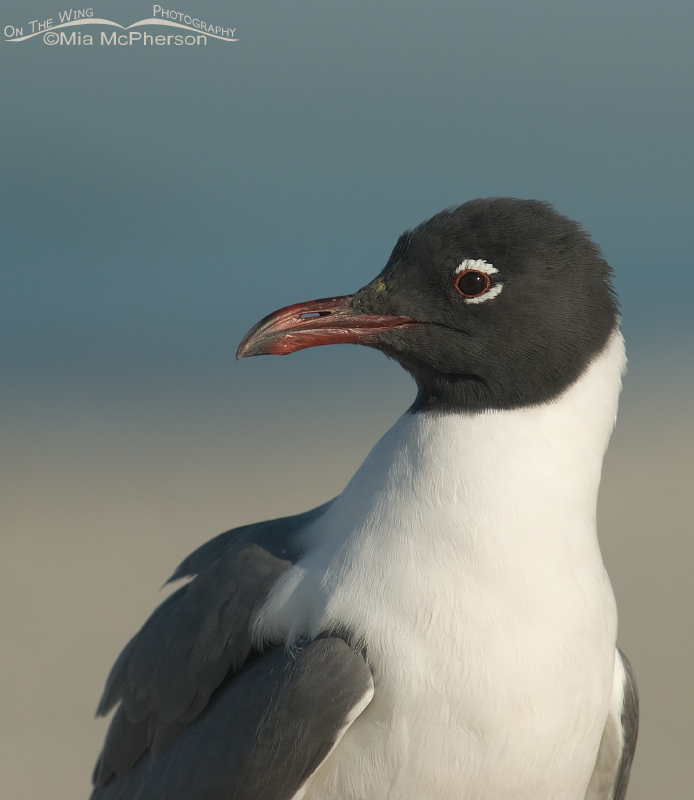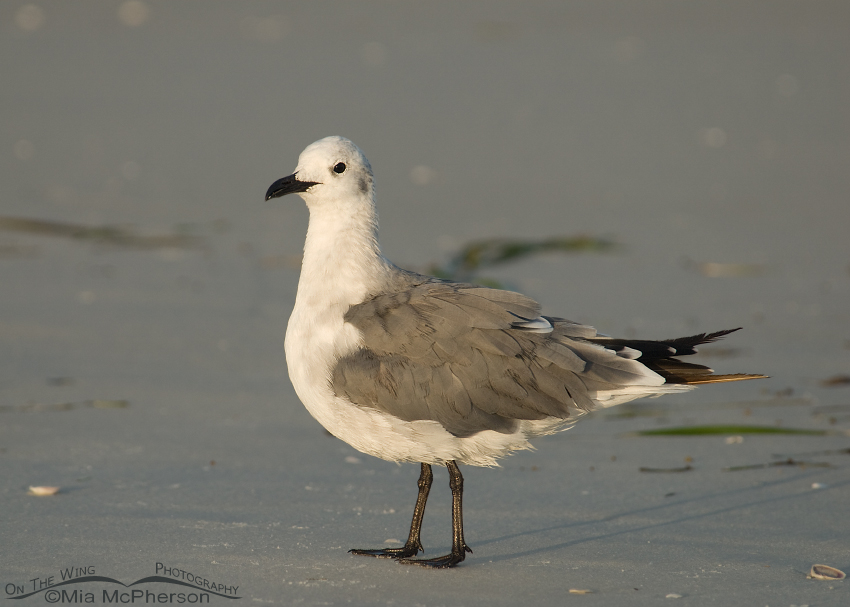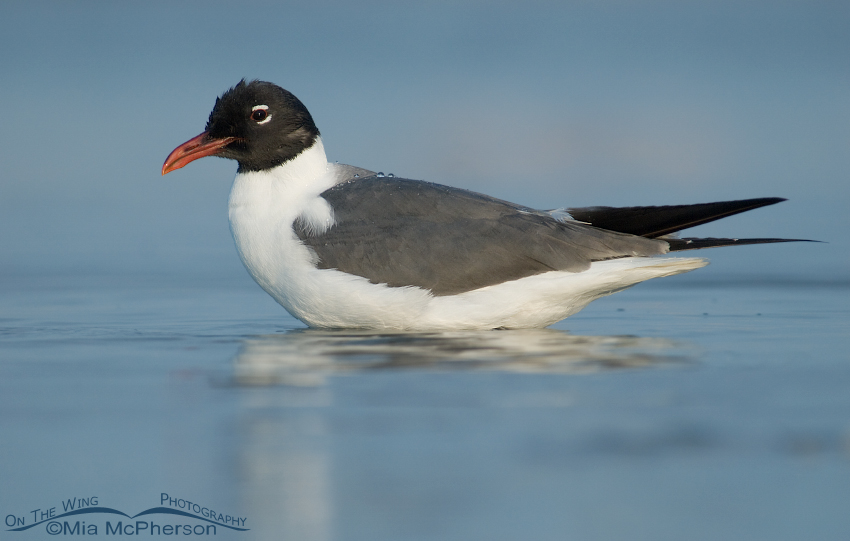 Laughing Gull portrait – Nikon D200, handheld, f6.3, 1/1250, ISO 160, Nikkor 80-400mm VR at 400mm, natural light
Laughing Gull portrait – Nikon D200, handheld, f6.3, 1/1250, ISO 160, Nikkor 80-400mm VR at 400mm, natural light
Laughing Gulls are quite common on the east and Gulf coastlines of the US, during breeding season they are usually found near saltwater but in nonbreeding season they are known to wander widely. I have yet to see one where I live in Utah but it wouldn’t surprise me much to see a Laughing Gull here in amongst the Franklin’s Gulls.
Photographers often pass up the opportunity to photograph gulls if there are other, shall we say more glamorous, species in the area but since I will photograph any and all species of birds I do have quite a few images I really like of Laughing Gulls.
The Laughing Gull in breeding plumage above was very cooperative and posed for me with the sand of the beach and the warm waters of the Gulf of Mexico behind it. Because of the contrasting white & dark plumage they can be a challenge to expose properly thus I found that photographing them in early morning, late afternoon or diffused light to works the best.
 Laughing Gull in nonbreeding plumage – Nikon D200, handheld, f6.3, 1/500, ISO 200, Nikkor 80-400mm VR at 400mm, natural light
Laughing Gull in nonbreeding plumage – Nikon D200, handheld, f6.3, 1/500, ISO 200, Nikkor 80-400mm VR at 400mm, natural light
Laughing Gulls in nonbreeding plumage lack the dark hood, the reddish bill and legs of birds in breeding plumage, additionally the red orbital ring also seems to be less pronounced or nonexistent in nonbreeding plumage. I like the snowy white head of the gull above.
 Laughing Gull in breeding plumage – Nikon D200, handheld, f6.3, 1/750, ISO 250, Nikkor 80-400mm VR at 400mm, natural light
Laughing Gull in breeding plumage – Nikon D200, handheld, f6.3, 1/750, ISO 250, Nikkor 80-400mm VR at 400mm, natural light
Any gull species photographed in beautiful light with interesting habitats can produce visually compelling images when the photographer uses vision and imagination. The common can become uncommonly appealing.
Life is good.
Mia
Click here to see more of my Laughing Gull photos plus facts and information about this species.


Your top Laughing Gull picture is absolutely stunning.
Very well done!
Cheers,
Glen.
Thank you very much Glen!